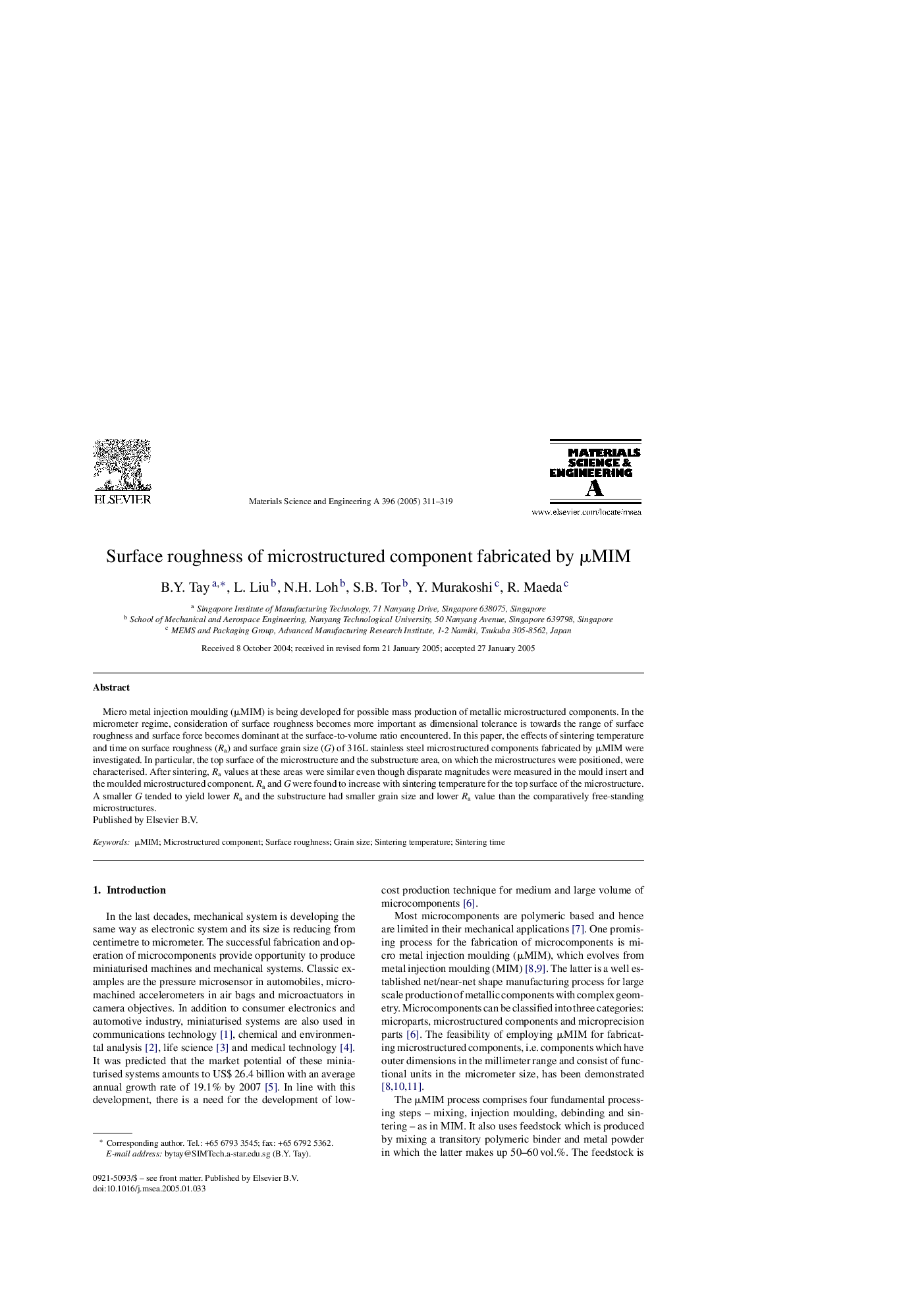| Article ID | Journal | Published Year | Pages | File Type |
|---|---|---|---|---|
| 9796358 | Materials Science and Engineering: A | 2005 | 9 Pages |
Abstract
Micro metal injection moulding (μMIM) is being developed for possible mass production of metallic microstructured components. In the micrometer regime, consideration of surface roughness becomes more important as dimensional tolerance is towards the range of surface roughness and surface force becomes dominant at the surface-to-volume ratio encountered. In this paper, the effects of sintering temperature and time on surface roughness (Ra) and surface grain size (G) of 316L stainless steel microstructured components fabricated by μMIM were investigated. In particular, the top surface of the microstructure and the substructure area, on which the microstructures were positioned, were characterised. After sintering, Ra values at these areas were similar even though disparate magnitudes were measured in the mould insert and the moulded microstructured component. Ra and G were found to increase with sintering temperature for the top surface of the microstructure. A smaller G tended to yield lower Ra and the substructure had smaller grain size and lower Ra value than the comparatively free-standing microstructures.
Related Topics
Physical Sciences and Engineering
Materials Science
Materials Science (General)
Authors
B.Y. Tay, L. Liu, N.H. Loh, S.B. Tor, Y. Murakoshi, R. Maeda,
